As Payment Stablecoins (PSCs) gain regulatory clarity under the GENIUS Act, regional banks face a $1T deposit migration risk. This blog explores why managed services—through PSC-as-a-Service or banking consortia—offer the fastest, safest path to digital relevance and resilience.
The financial threat posed by Payment Stablecoins (PSCs) is an imminent strategic crisis poised to accelerate sharply by 2026. As per reports, over $1 trillion in traditional bank deposits are at risk of migrating to stablecoins by 2030.
This outflow affects accounts that handle frequent transactions—like business operating accounts, regular customer balances, and cross-border payments—cutting off your bank from valuable transaction data that’s crucial for things like assessing credit and detecting fraud.
The GENIUS Act, signed into law on July 18, 2025, provides the necessary regulatory clarity to legitimize this asset class, accelerating institutional adoption and competition.
In this blog, we explore why managed services offer the most practical and powerful strategy for community and regional banks to protect deposits, retain data-driven insights, and ensure long-term relevance in a rapidly evolving financial landscape.
1. The Prohibitive Cost and Risk of a Proprietary Build
While building a proprietary stablecoin platform offers the highest degree of control, this strategy is practically unfeasible for all but the largest Tier 1 financial institutions. The capital, time, and specialized talent required create a barrier to entry that most regional banks simply cannot overcome.
For instance, a proprietary build would typically require 18 to 36 months of development, regulatory approval, and integration. In a market where competition is intensifying rapidly due to regulatory clarity, a multi-year delay is tantamount to surrender.
Also, developing such a platform from scratch demands immense upfront investment in technology, specialized blockchain engineers, and smart contract auditors. Furthermore, the bank takes on Sole Responsibility for compliance and the inherent High Execution Risk of such a complex, greenfield project.
The GENIUS Act, for example, imposes bank-like compliance burdens (BSA/AML/KYC) on all stablecoin issuers. Building this compliance infrastructure in-house, from transaction monitoring to real-time reserve management, is a massive and continuous undertaking.
2. Tokenized Deposits
Tokenized deposits—blockchain-based representations of traditional deposits—are a useful defensive measure for banks to gain internal efficiency and allow for instant settlement within the bank. However, they are fundamentally insufficient as a competitive response to the broader stablecoin disruption.
The critical flaw lies in their lack of interoperability.
- Tokenized deposits typically operate within a closed environment. They offer instant settlement only for “on-us” transactions—meaning between customers of the same bank.
- The core appeal of Payment Stablecoins (PSCs) is their function as a universal, interoperable settlement asset that moves seamlessly across a wide network of applications, chains, and institutions. A tokenized deposit from Bank A cannot easily be used on a platform that requires a stablecoin issued by Bank B, or a public stablecoin.
Tokenized deposits miss the main advantage of the digital economy — the ability to move money seamlessly across networks. They are valuable for modernizing internal processes, but they are not a winning strategy for competing in the open digital asset ecosystem.
3. The Managed Services Advantage – Partnering for Speed, Scale, and Resilience
For the vast majority of U.S. banks, the critical strategic question distills down to how to partner or how to choose right managed services partner, not whether to partner.
Managed services—through PSC-as-a-Service or a Banking Consortium—help banks overcome major barriers like cost, technology, and complexity, enabling them to compete more effectively.
A. PSC-as-a-Service (PSC-aaS) for Accelerating Innovation
The PSC-aaS model is a turnkey solution that allows banks to launch a unique, branded digital currency with minimal upfront commitment. This approach transforms a massive capital expenditure project into a more predictable operational expense. It boasts a Low upfront capital expenditure and a rapid Time-to-Market of just 3-6 months.
A specialist provider handles the operational and technical heavy lifting, including smart contract deployment, secure wallet infrastructure, and real-time reserve management.
Crucially, the PSC-aaS provider often integrates a compliance engine that manages the rigorous, bank-like requirements of the GENIUS Act, including KYC/AML workflows and automated regulatory reporting.
This reframes the dynamic from rivalry to collaboration, allowing the bank to focus on its core strengths—brand trust, distribution, and customer relationships—while instantly acquiring the necessary innovative technology.
B. The Banking Consortium Model
Joining a consortium allows institutions to pool resources and mutualize risk, achieving scale that would be impossible individually.
Member banks jointly fund the development, maintenance, and compliance of the platform, significantly reducing the financial burden on any single institution. A consortium creates a common, interoperable settlement asset that is trusted by all members, establishing a shared liquidity pool and enabling instant, low-cost payments across the entire network. This directly counters the network effects enjoyed by large, non-bank-issued stablecoins.
This approach is already being implemented. Examples include the USDF Consortium in the U.S., formed by FDIC-insured community and regional banks to manage a shared tokenized deposit, and collaborative ventures among major European banks to launch MiCAR-compliant stablecoins. This functions as a modern revival of the traditional clearing house for the digital age.
Conclusion
Regardless of which managed services model you choose—partnership or consortium—your success ultimately depends on a solid foundation of real-time data visibility.
In an era of 24/7, real-time payments, traditional batch-based monitoring is no longer sufficient. A reconciliation backlog is not just an operational inconvenience—it’s a critical risk in a T+0 environment, signaling an inability to know your true cash and reserve position at any moment.
For regional banks, strategic partnering is no longer optional. It is the fastest, safest, and most capital-efficient path to maintaining relevance and competitiveness in the emerging $1 trillion stablecoin economy.
At Anaptyss, we help financial institutions build that readiness through digitally enabled managed services—combining domain expertise, intelligent automation, and real-time analytics. Our solutions empower banks to modernize operations, strengthen compliance, and achieve sustainable growth in a rapidly evolving digital landscape.
To explore how Anaptyss can help your institution accelerate this transformation, write to us at info@anaptyss.com.



